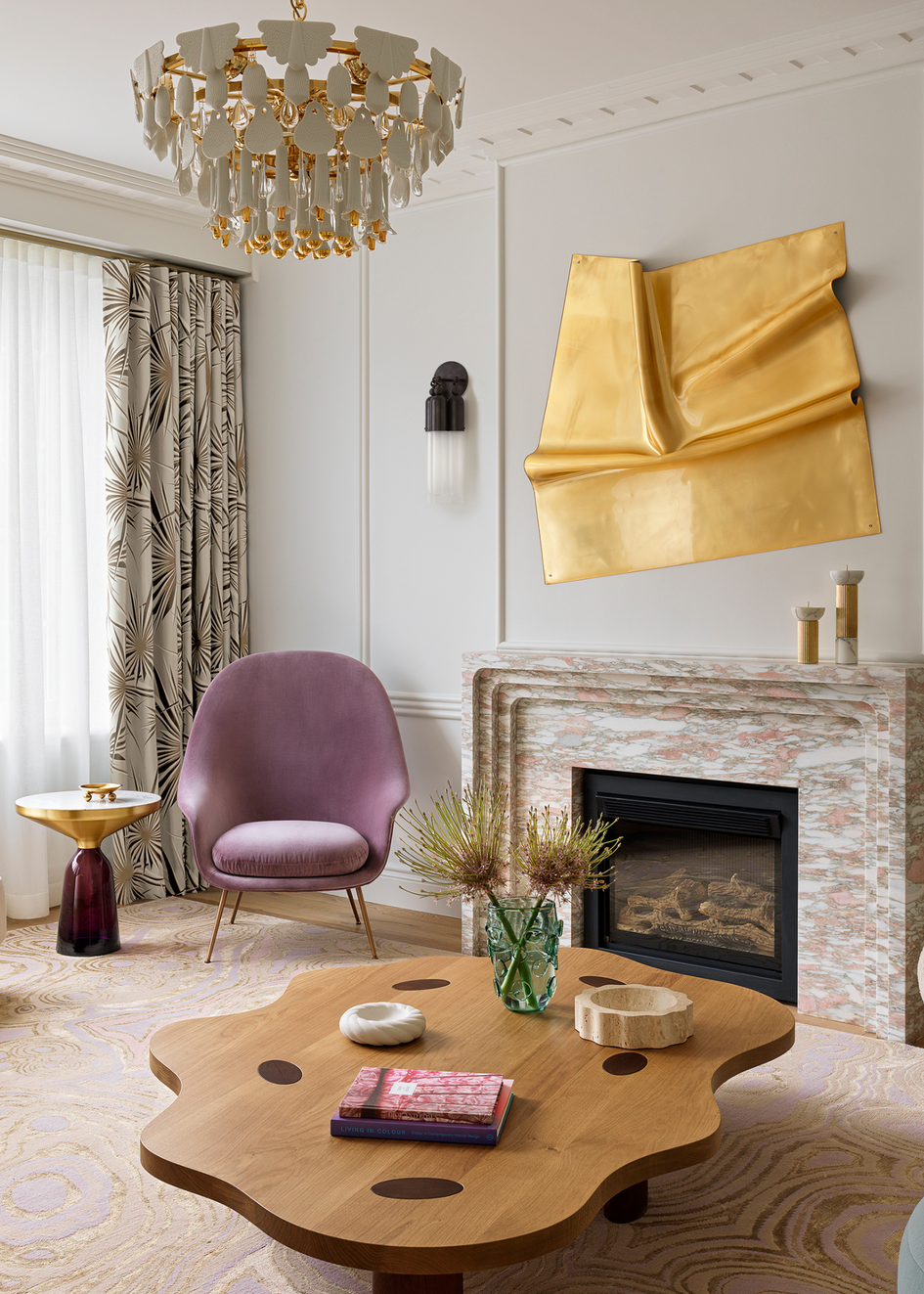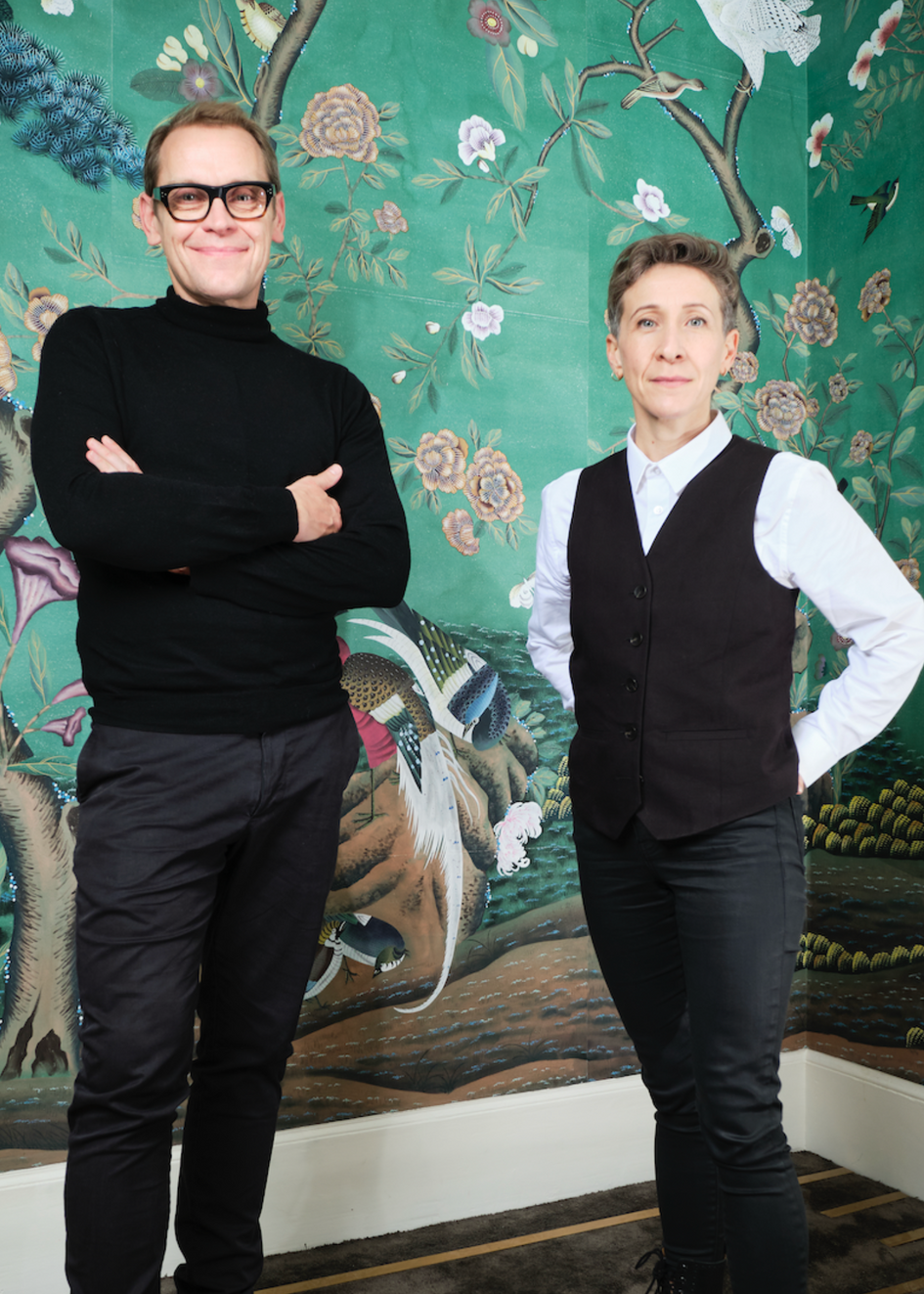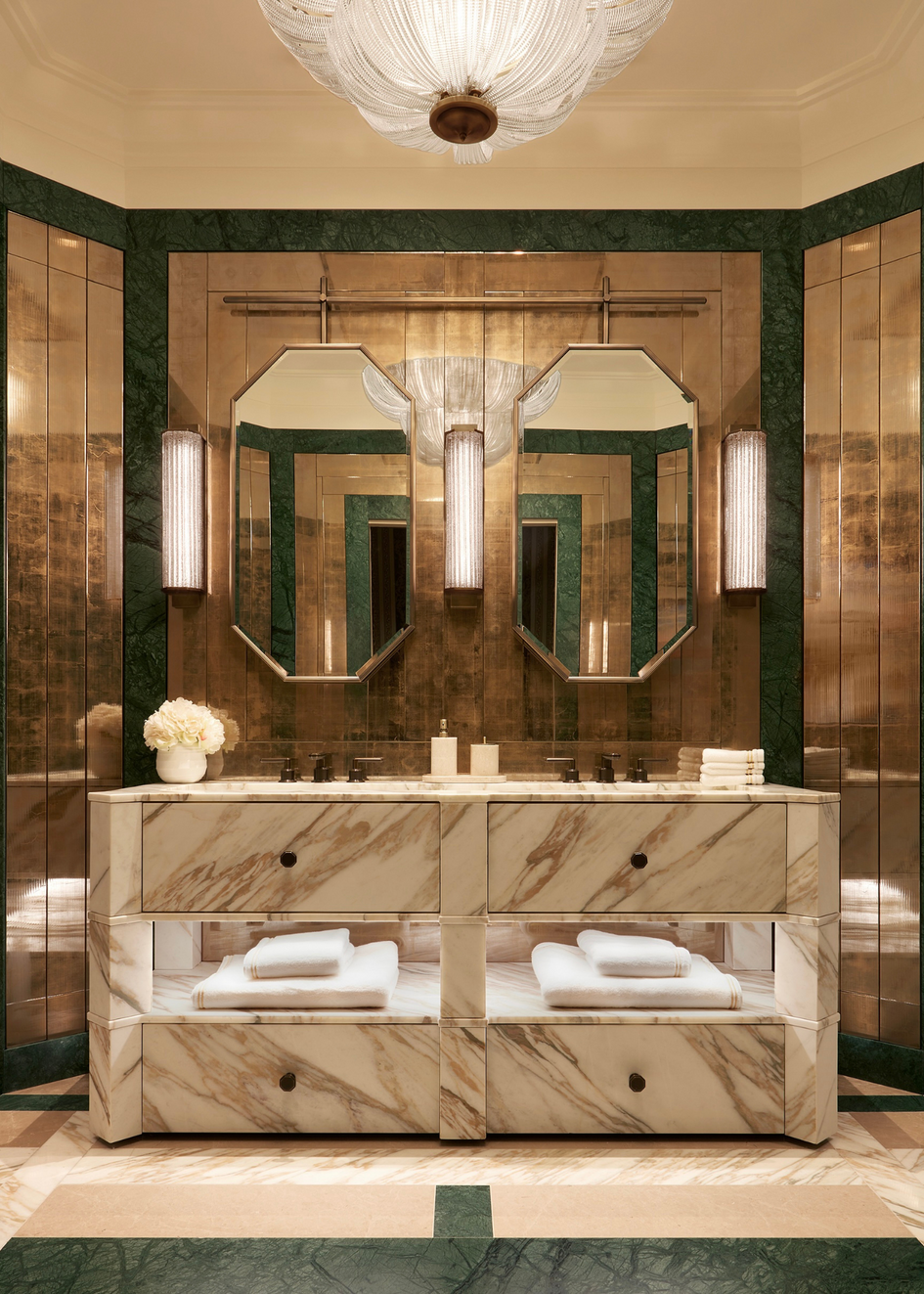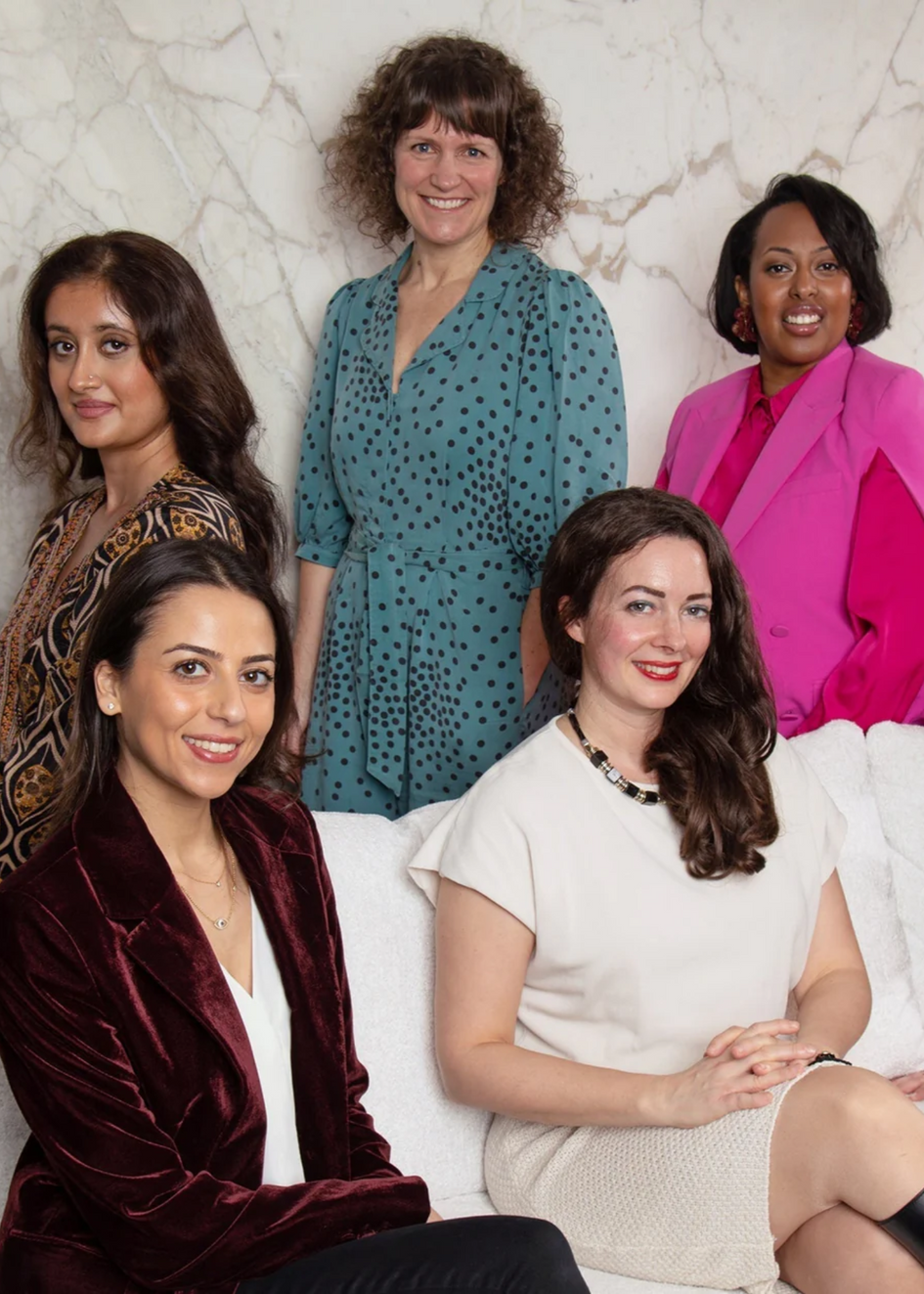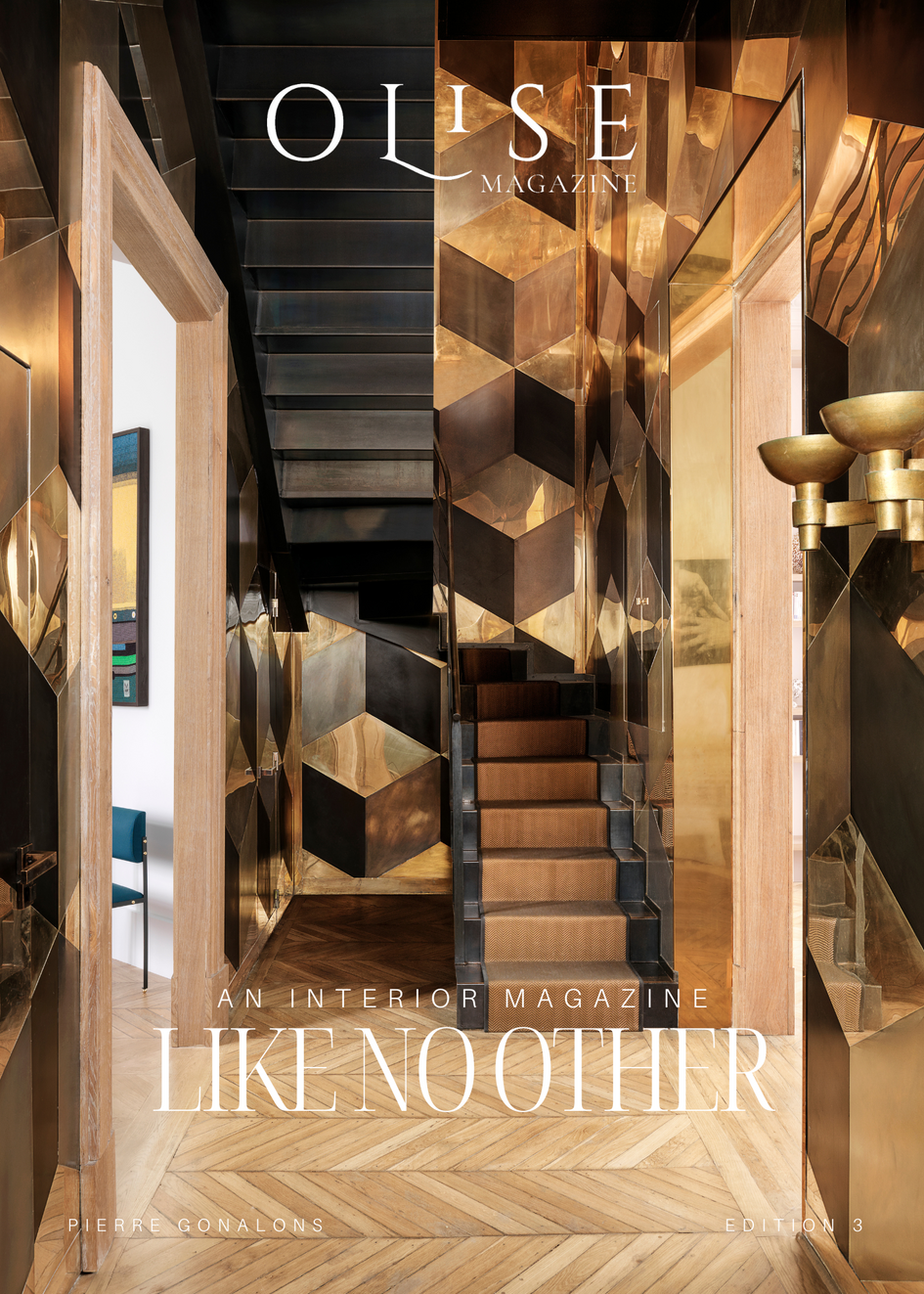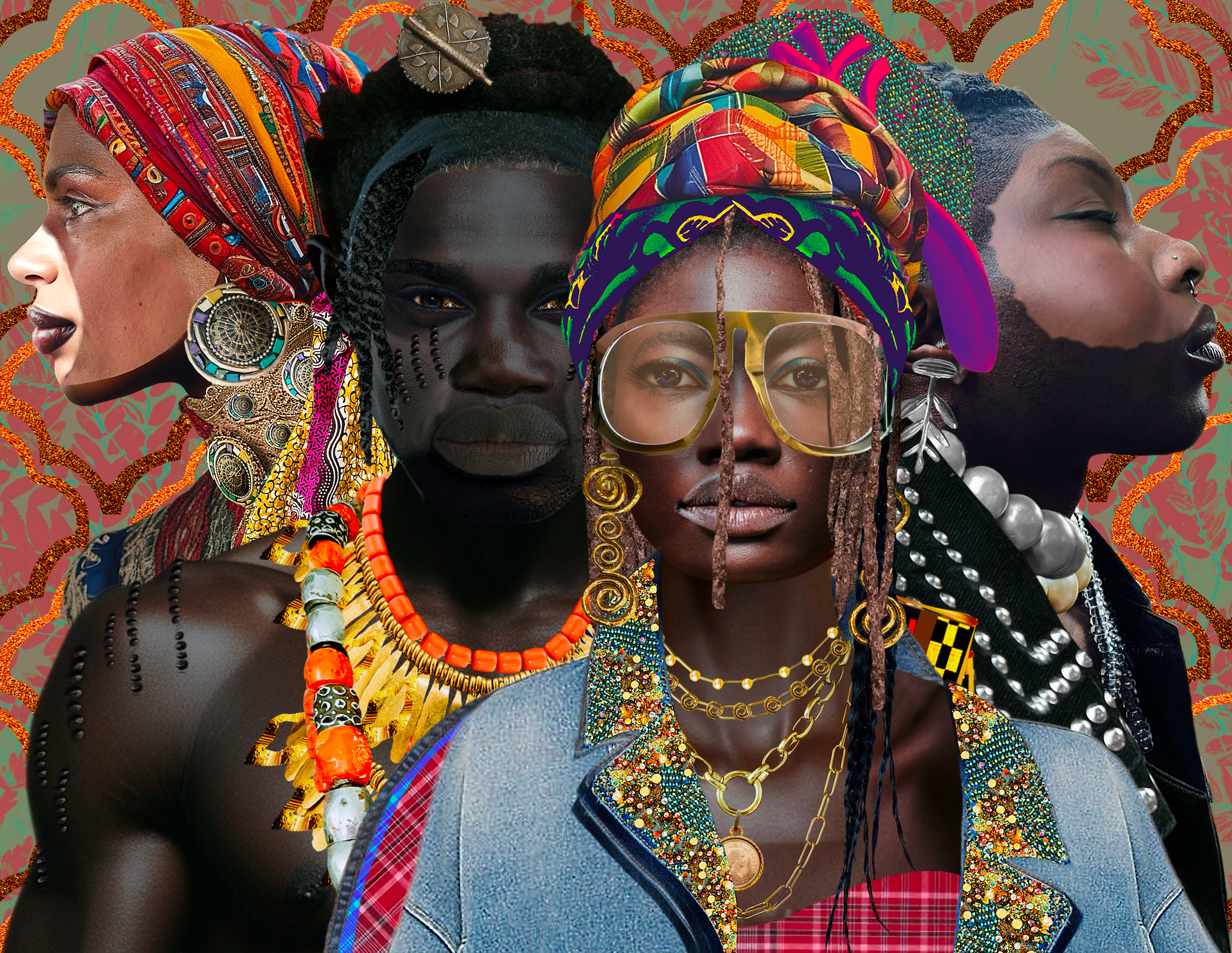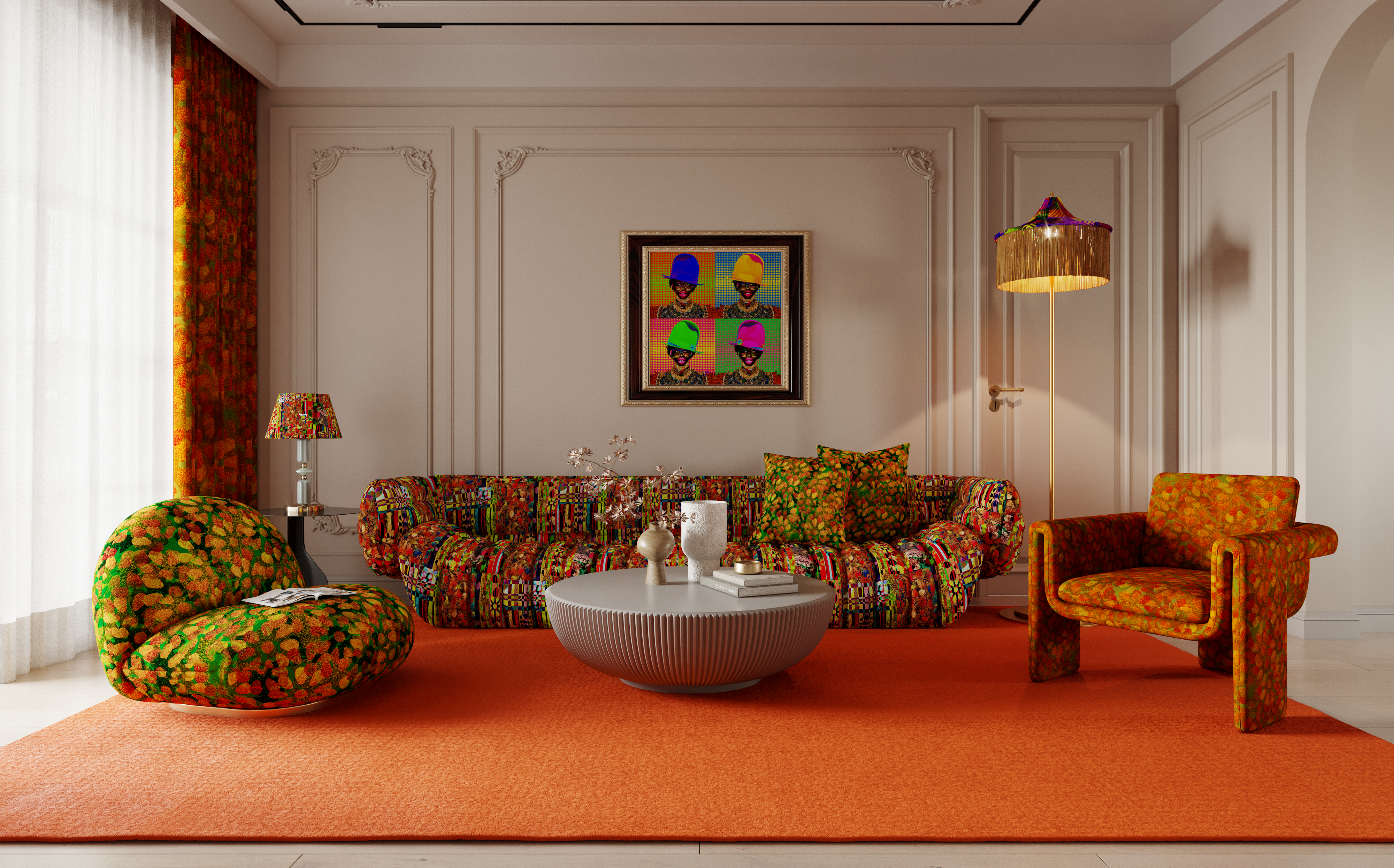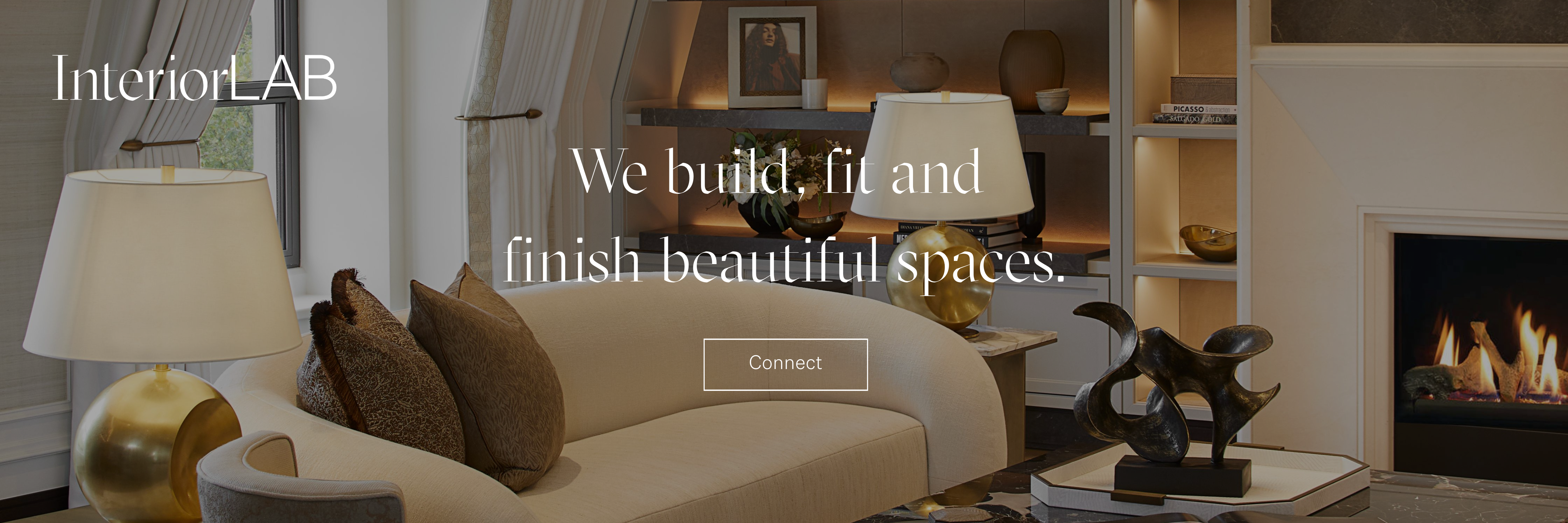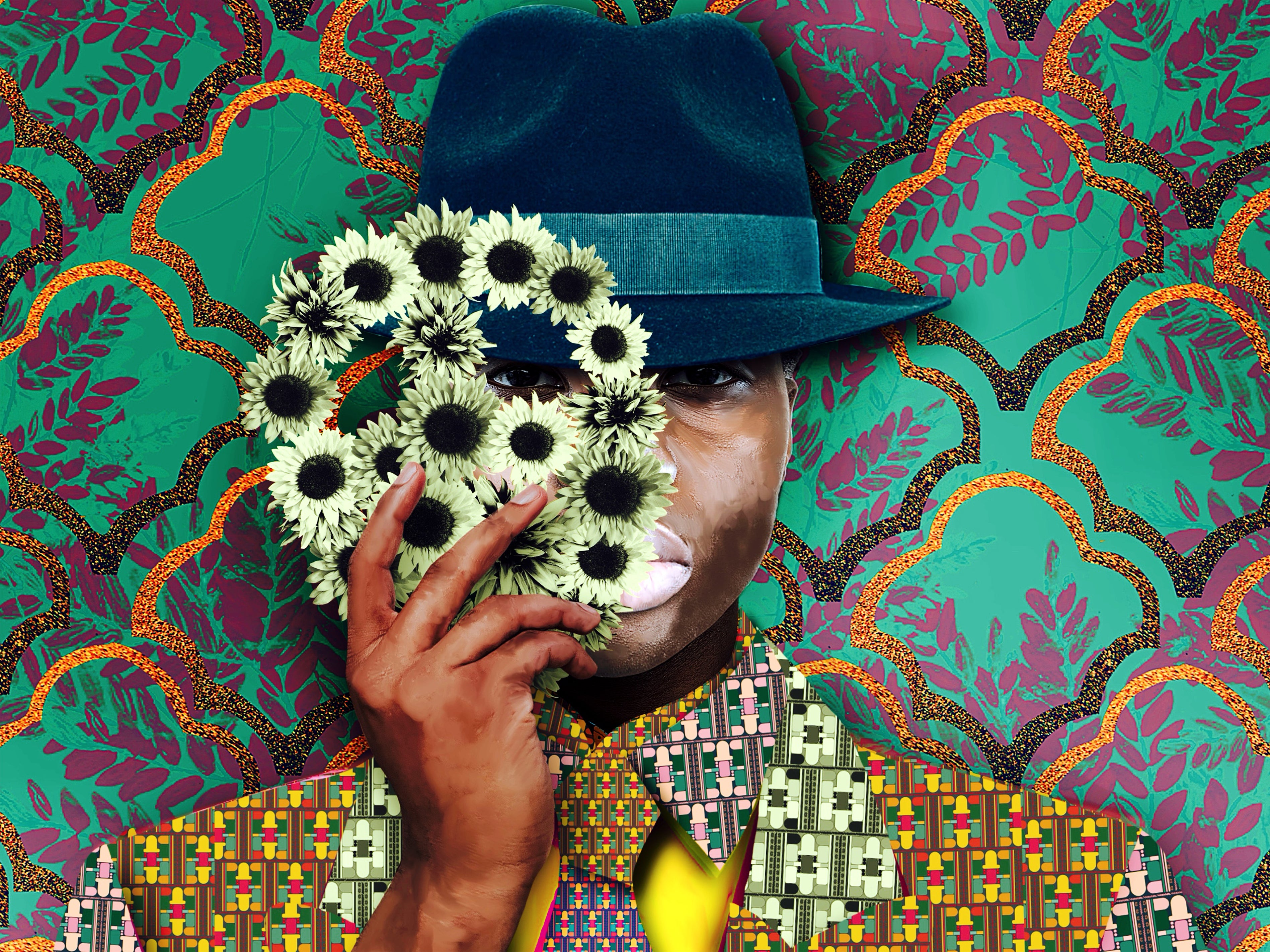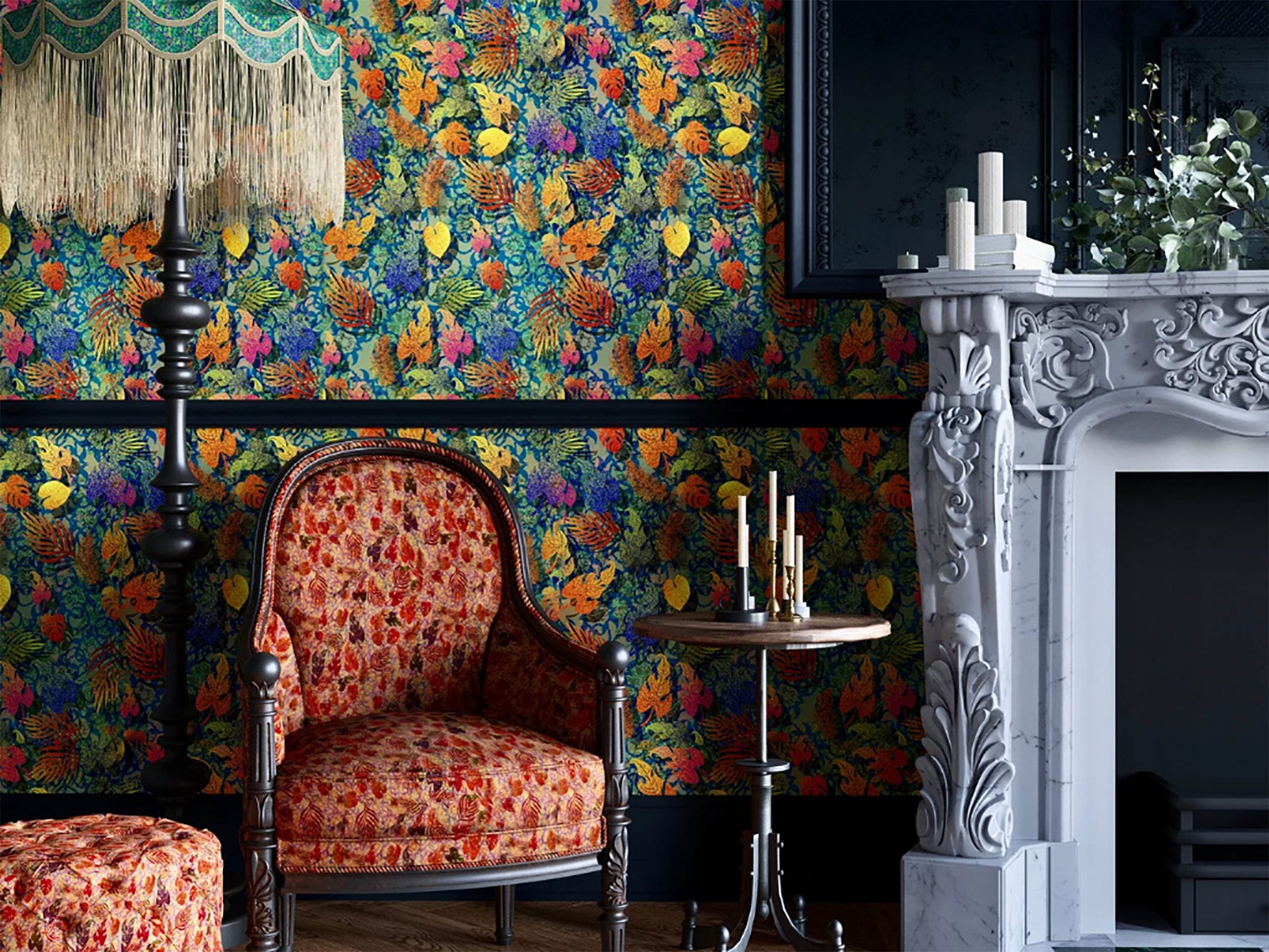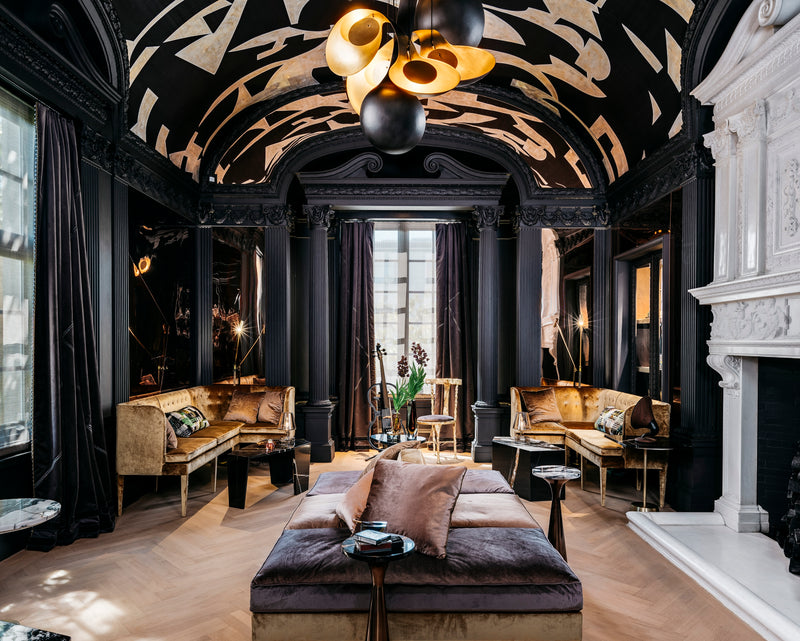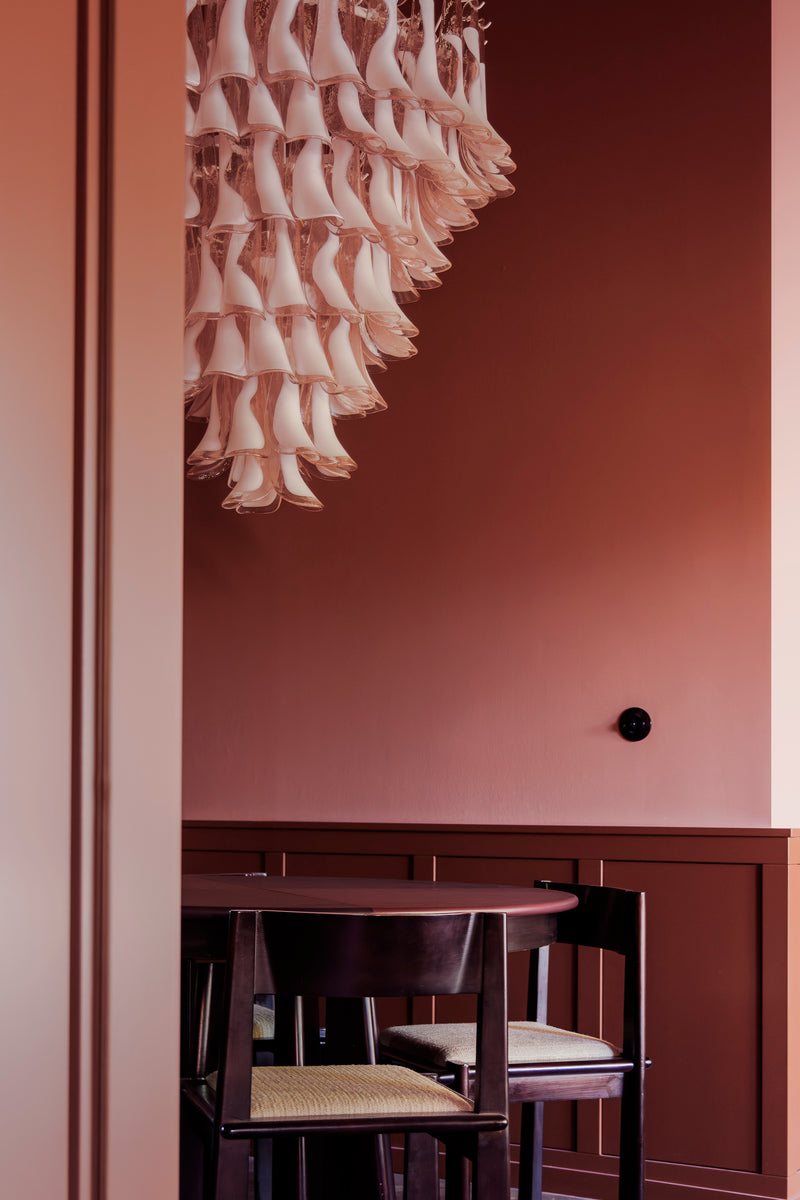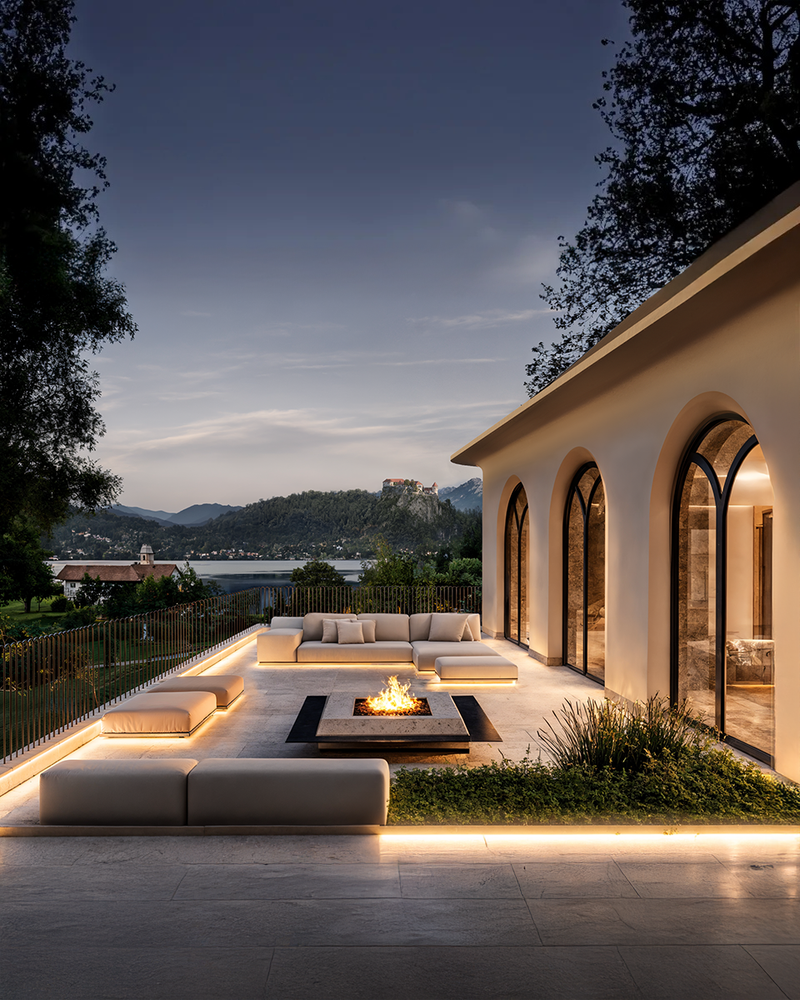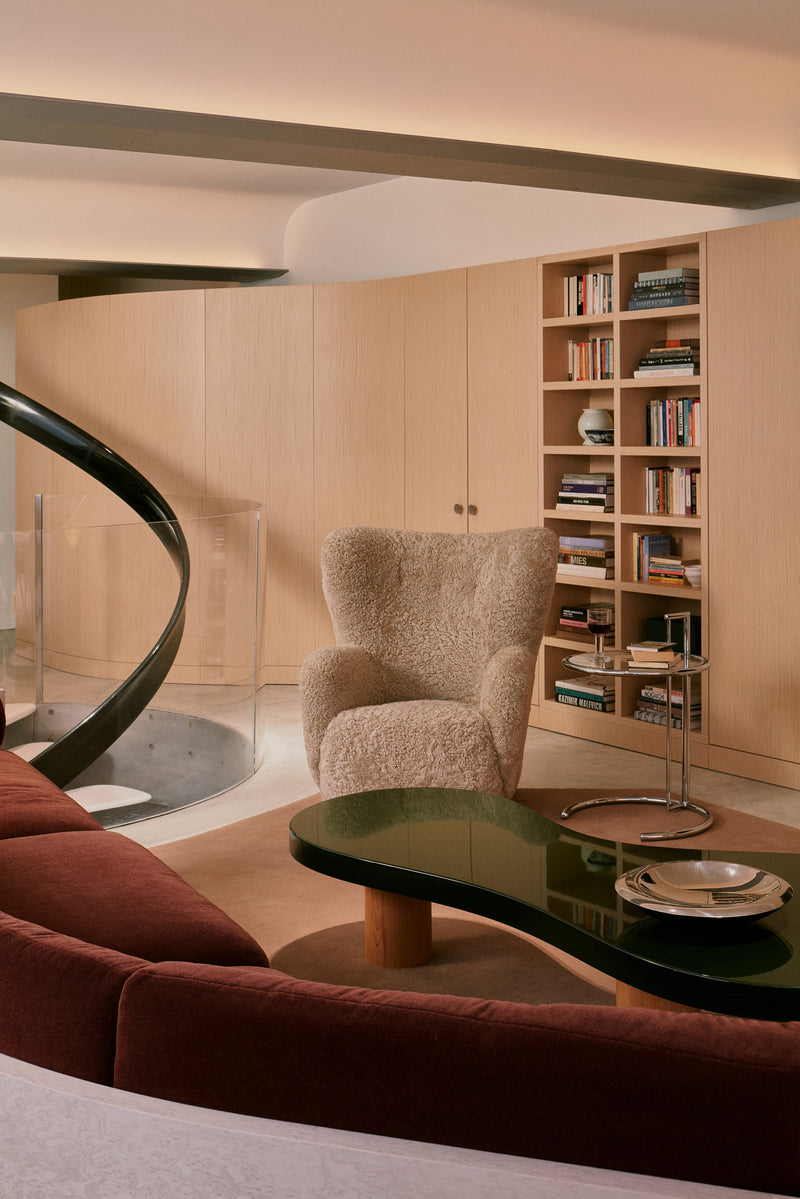"This is us" by Caroline Chinakwe. Commissioned by The London Museum Docklands
Black Beauty, Loud and Layered: Caroline Chinakwe Unfiltered
EXPERTS 01.07.25
Caroline Chinakwe’s bold, Afrocentric art bridges fashion, identity, and activism—here, she shares what fuels her vivid creative world.

Q: Caroline, your work is beautifully bold, layered, and full of emotion. How would you describe your style, and what do you hope people feel when they first see it?
Thank you, that’s such a lovely way to describe it. I’d say my style is a mix of pop art, Afrofuturism, fashion, and cultural storytelling. It’s bold, unapologetic, emotional, and deeply rooted in Black culture. I work a lot with layers because we are layered, complex, and beautiful. When someone first sees my work, I want them to feel something. Whether it’s power, pride, joy, or even confusion, I want to provoke a reaction. Because that emotion is the beginning of a connection.
Q: You often celebrate Black identity through your art. How has your own story shaped the work you create today?
My story is everything. I’m a British-Nigerian woman, a mother, a creative who’s navigated spaces where my identity wasn’t always seen or celebrated. That experience fuels everything I create. My art is a response to what I’ve lived and what I experienced working in the fashion industry, the beauty and boldness of Black identity that for so long has been misrepresented. But also the tension, the invisibility, the fight to be heard. It’s about reclaiming space, visually, emotionally, and culturally.
I want to reflect the richness of who we are, not just for us, but for the world to see. In 2025, Black skin is still a discomfort for so many people. It’s what we’re constantly judged by, and not always in a positive way. I want my work to contribute to making people comfortable seeing Black faces in all spaces.

Q: You started out in fashion before moving into the art world. What sparked that shift, and how does your fashion background still influence the way you create?
Fashion was my first creative language. It taught me how to communicate without words, how colour, shape, and attitude can speak volumes. The shift into art happened naturally when I realised I needed more freedom to express deeper stories, our stories.
There was a period when being in the fashion industry lost its purpose for me. All I could see was the negativity it was perpetuating, especially around Black models, our beauty, and our style. I wanted to change that. I wanted the freedom to challenge what people thought they knew about Black style and culture.
With art, there were no rules, no trends, just truth. But fashion never left me. It still shows up in my work, in the styling of the figures, the composition, the drama. That bold, editorial edge is always there. I don’t fight my fashion background, it helps define my style and tell my story through a different lens.

Q: Your art blurs the lines between fine art, fashion, and interiors. How do you see art shaping the way we live in and design our spaces, and how has that crossover played out in your own work?
I think art should live with us, not just in galleries. It should breathe life into our homes, our clothes, our public spaces. When I create, I’m always thinking about how that piece can exist beyond the wall, maybe as a statement in a hotel lobby, a powerful print in someone’s living room, or even a wearable piece.
For me, the crossover isn’t just aesthetic, it’s emotional. It’s about surrounding ourselves with stories that reflect who we are and what we value. Art becomes part of your identity, your environment, your daily life.

Q: Our readers would love to know — what’s a typical day in your studio like? Do you need quiet focus or music-fuelled creative chaos?
Oh, definitely music-fuelled chaos! I need energy to create, my studio is full of sound: Afrobeat, jazz, soul, 90s R&B, hip hop, and even LBC talk radio. It depends on my mood, but sound plays a huge role in how I flow. I work best with noise, but only when I’m at peace, happy, in love, or just calm. That’s when I can bring joy into my work and create the kind of pieces I love.
There’s usually a spicy chai latte next to me, layers of unfinished work, and moments of dancing between ideas. I try to be in the studio 3–4 days a week, that could be any day, even weekends. We have a colourful and tidy showroom space, and a separate creativity and storage space. No day or week is ever the same, but it’s always alive, and that’s how I like it.
I also work from different spaces when I need to focus, sometimes at home in bed watching a Housewives franchise, or in a members’ club creating on my iPad, surrounded by people and background noise.
Because I’m running a business and growing a brand, I don’t have as much uninterrupted time to just create as I’d like. A big part of my time goes to admin, meetings, and networking, but I know that’s the reality for most, if not all, start-ups.
Q: Caroline, your pieces are so powerful, like fashion, activism, and storytelling all rolled into one. If you could turn one into a real-life space, what would it look and feel like?
Wow, I love this question, you’ve really done your research on me, love it! I think it would be like walking into a surrealist piece of art. Bold colours, oversized prints, textured walls, and mirrors reflecting powerful images of Black beauty and resilience. Maximalism to the max. Every surface would be covered, and everything would mean something.
There’d be sound, layered conversations, music, laughter, and space for people to just be. A bit gallery, a bit lounge, a bit fashion showroom. A space for self-expression where everyone feels welcome and free to be themselves. Think maximalism with meaning. It would feel like peace, like home, but elevated.
Q: Every creative journey has its tough moments. What’s been one of your biggest challenges, and how do you push through when things feel heavy?
One of the biggest challenges has been balancing being a creative and a mother, especially when the industry doesn’t always make space for both. There have been moments when I’ve doubted this new career, starting all over again and trying to build something from nothing.
I’ve sacrificed a lot of time with my youngest, and he’s had to learn independence fast. That’s come with moments of guilt. But I’ve learned that creativity is a lifeline, not just for me, but for the people watching me. My children, young Black artists, even my clients. When things get heavy, I remind myself of my purpose, what I’m building, and that nothing worthwhile comes without struggle. I take a breath, maybe a break, then come back even bolder.

Q: And finally, can you give OLISE readers a little tease, what’s something exciting you’re working on or dreaming up?
There’s a lot brewing! I’m currently working on a new series that’s taking me in a completely new stylistic direction, and I’m so excited about it. I’ll be showing this work in a group exhibition in July with Motoarto, a new concept that blends art and cars.
I’m also expanding the Chinakwe brand into home and lifestyle, so people can experience my art in more personal, everyday ways. We’re launching the Chinakwe interior line, soft furnishings, wallpapers, and upholstery. And there’s a very exciting collaboration coming soon that I can’t talk about yet… but let’s just say, it’s going to be bold, luxurious, and will see the brand expanding into new territories.


